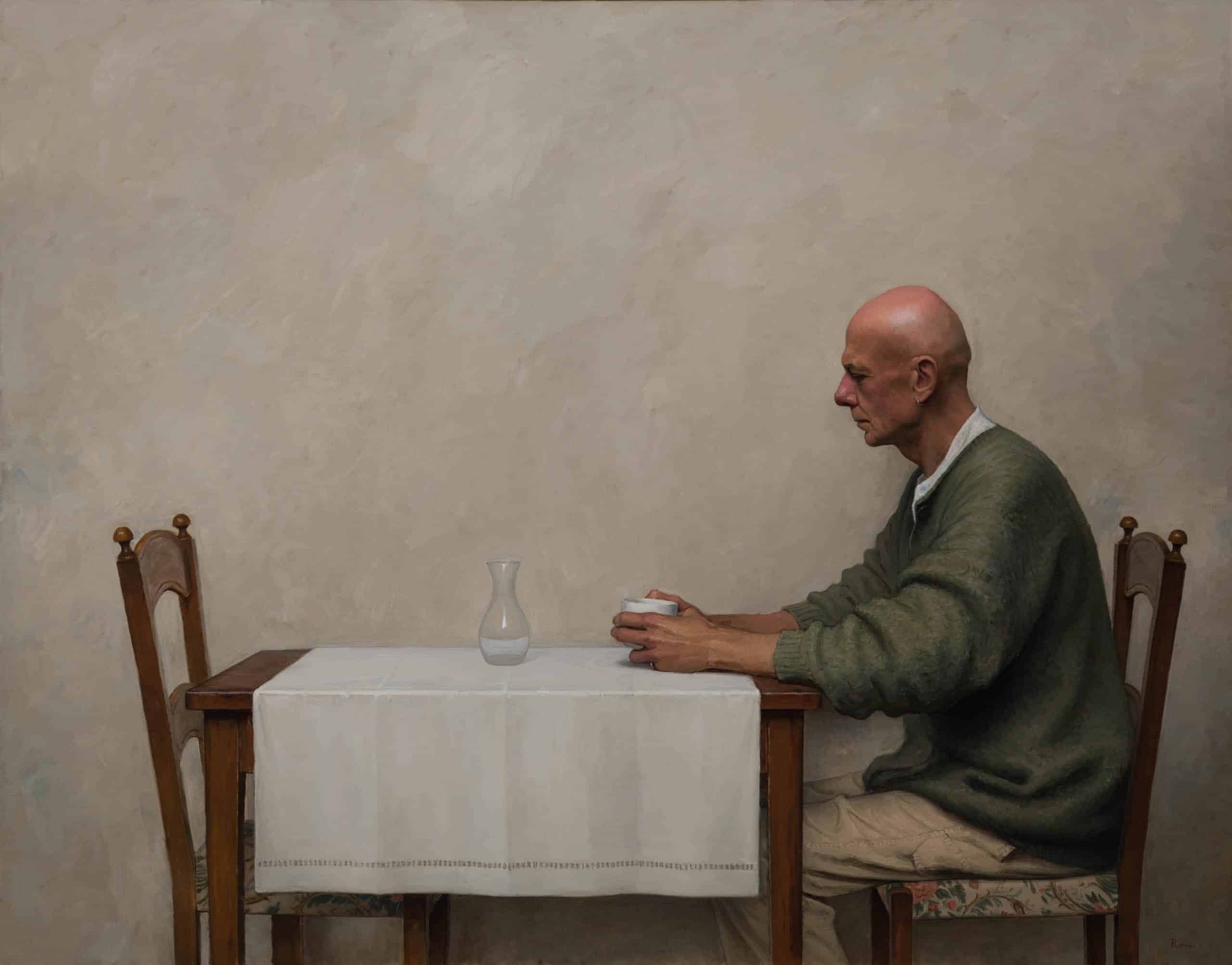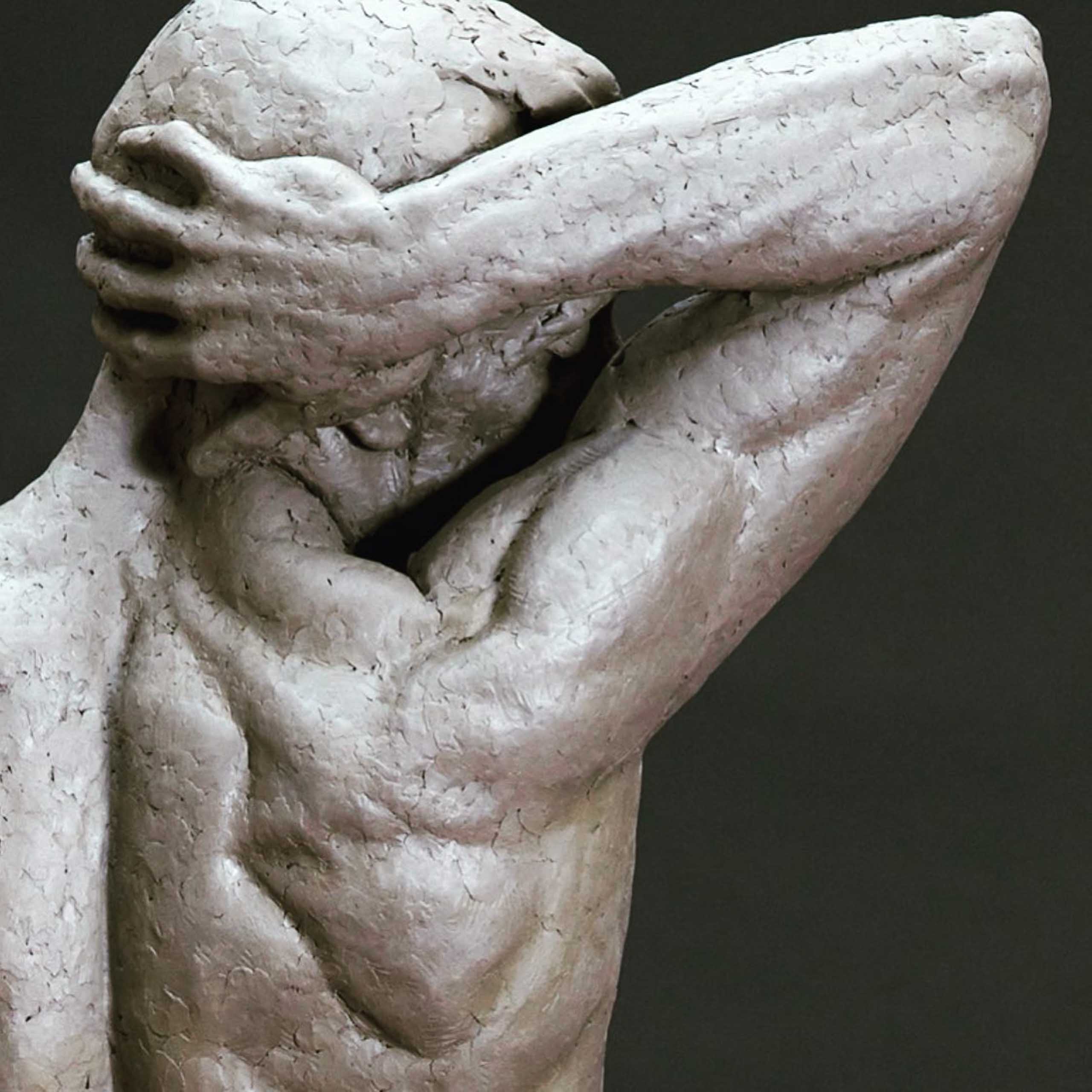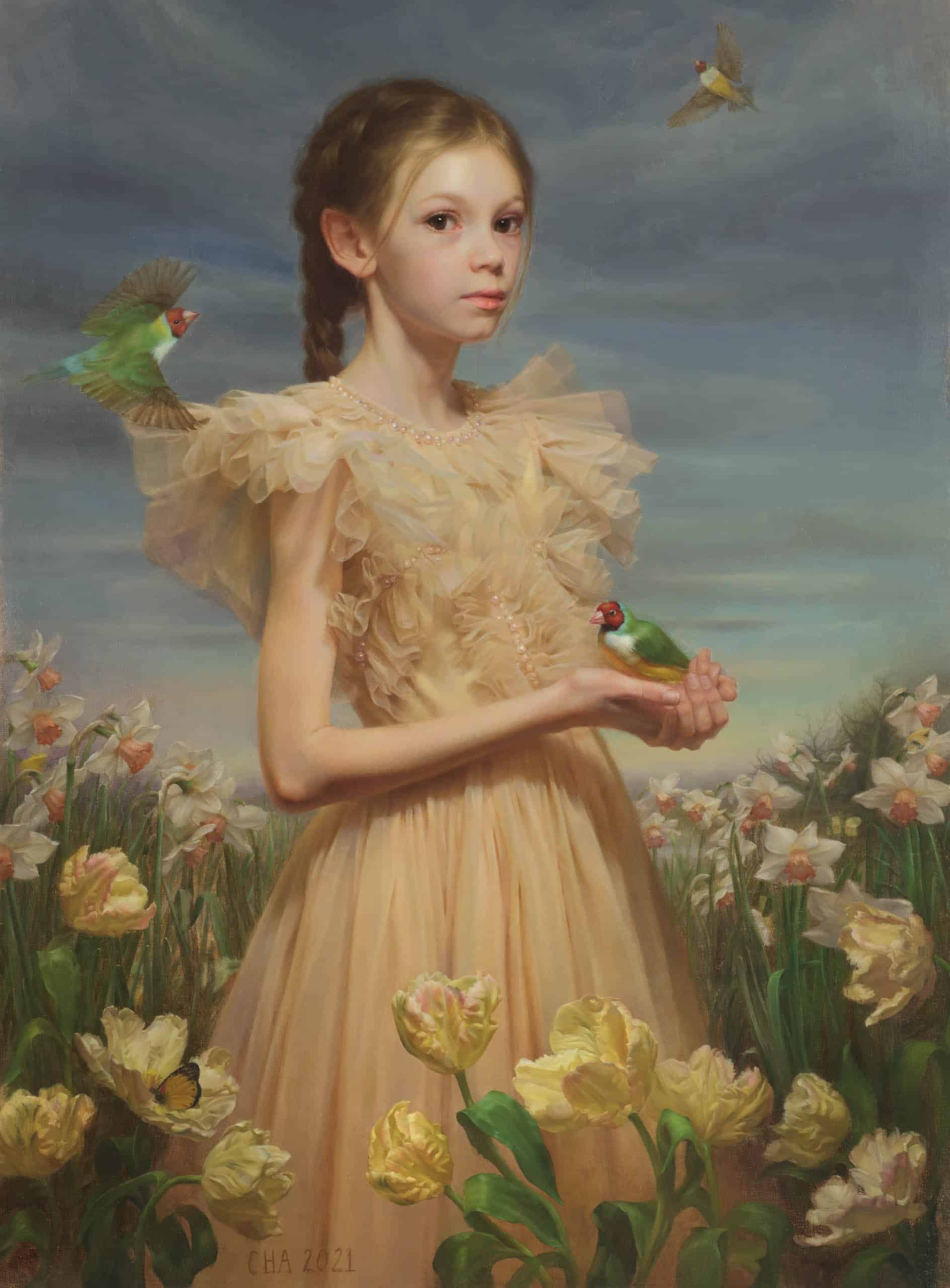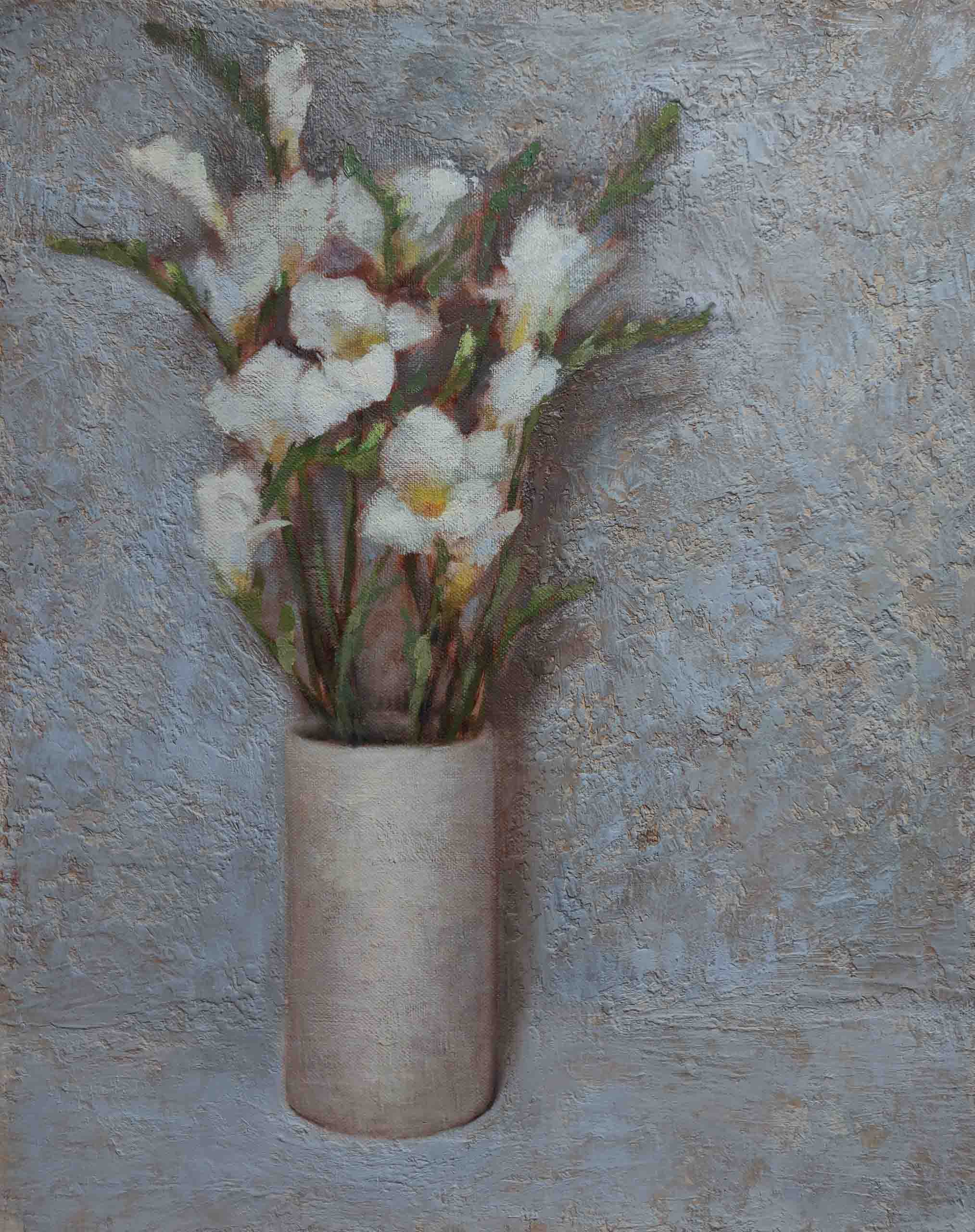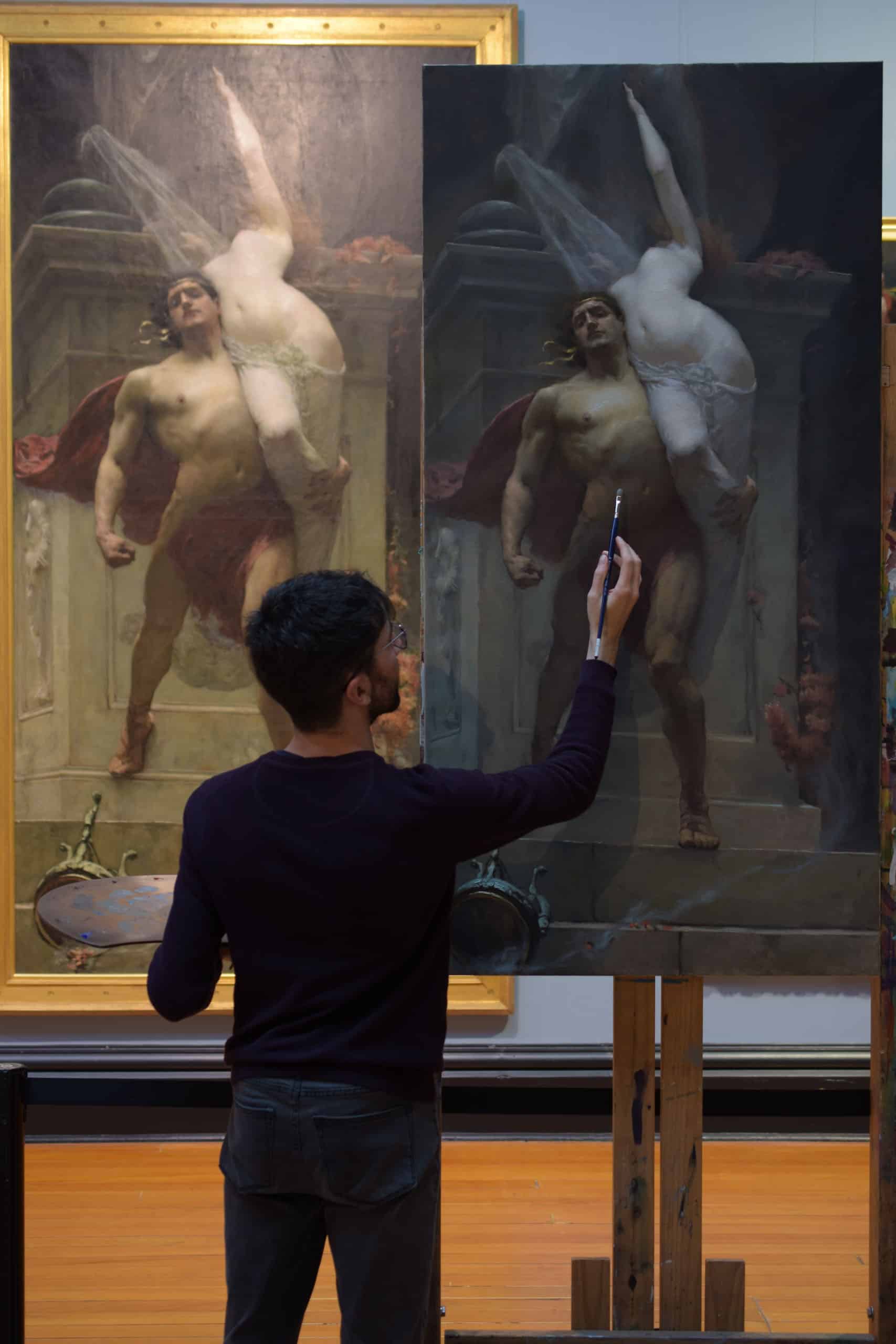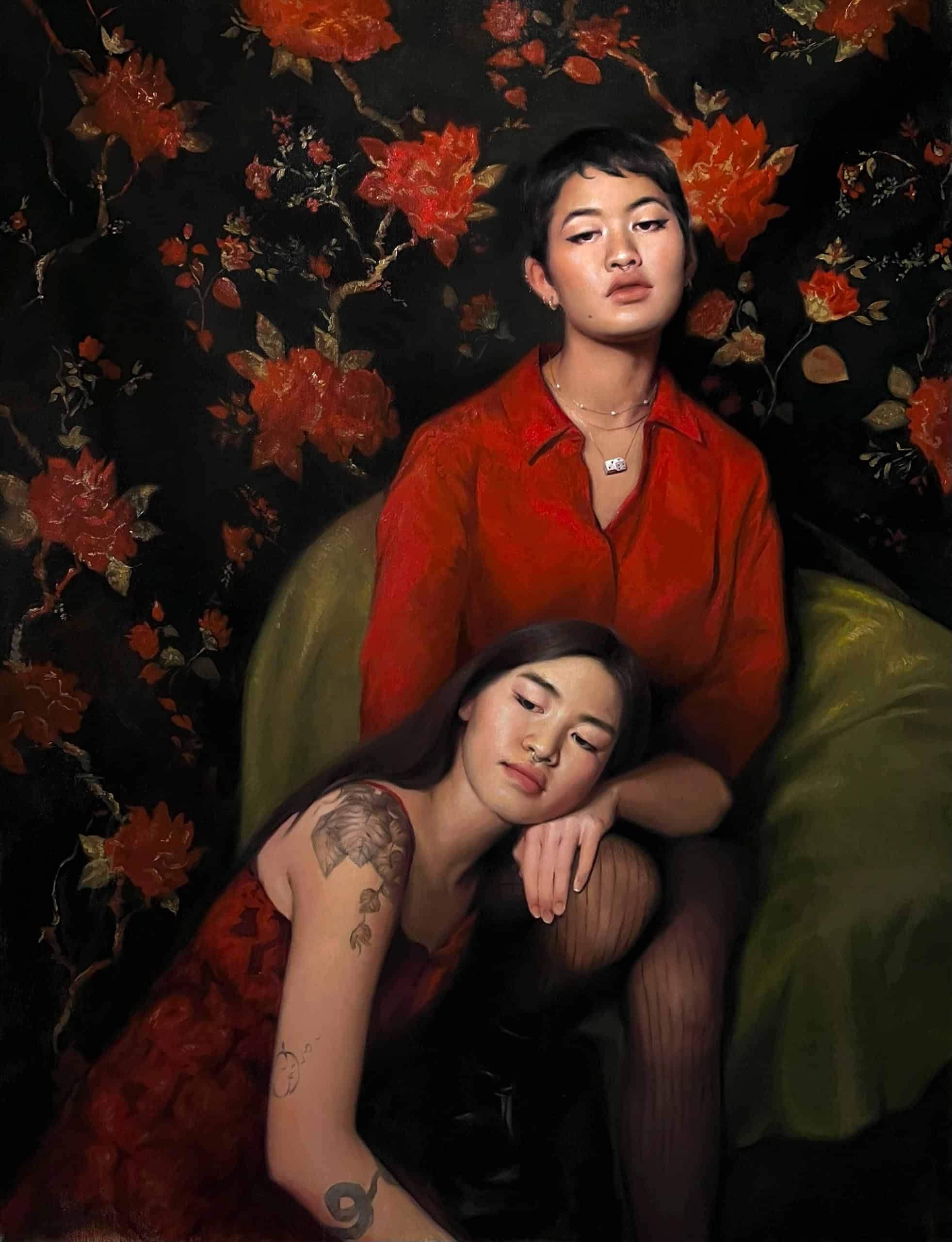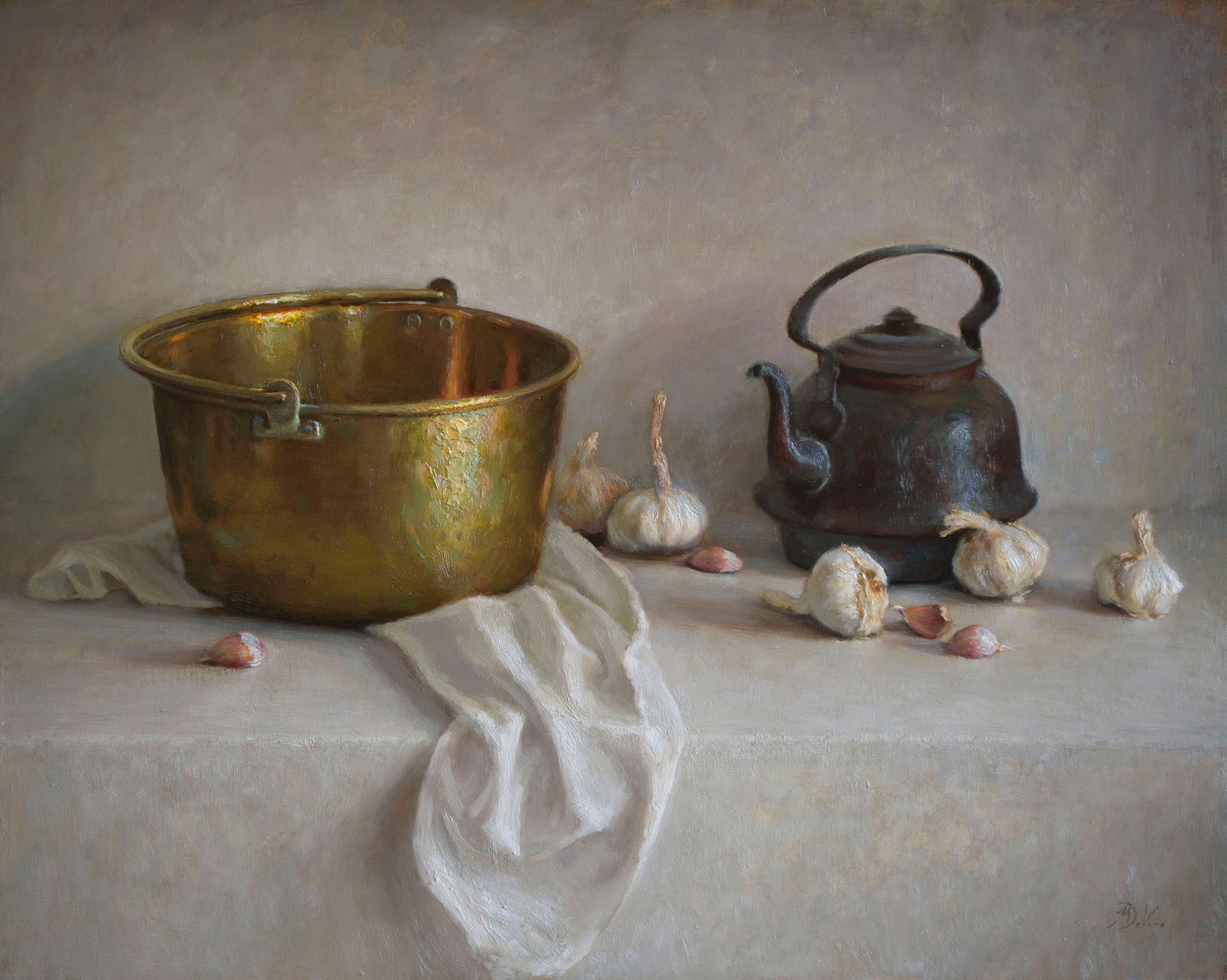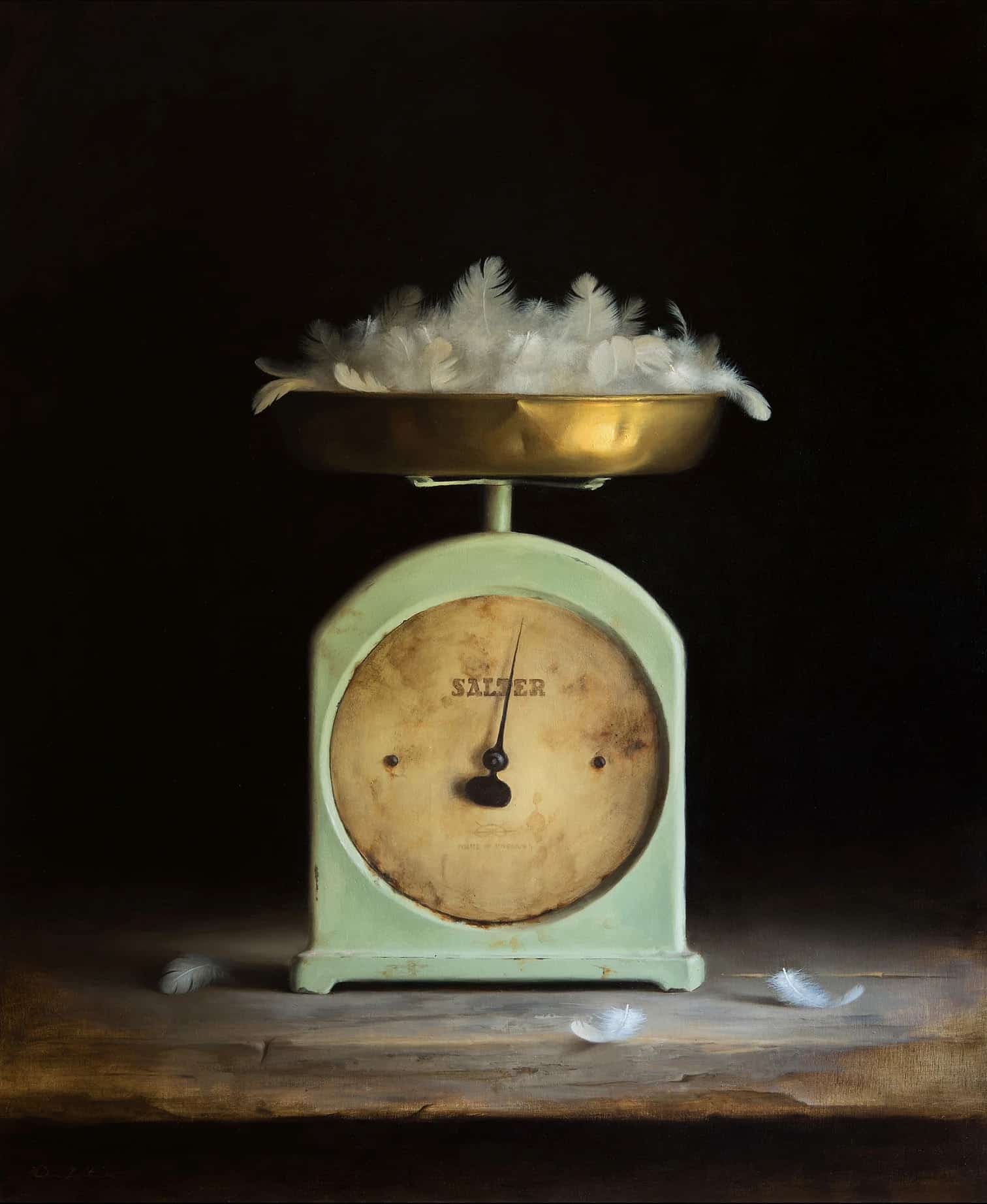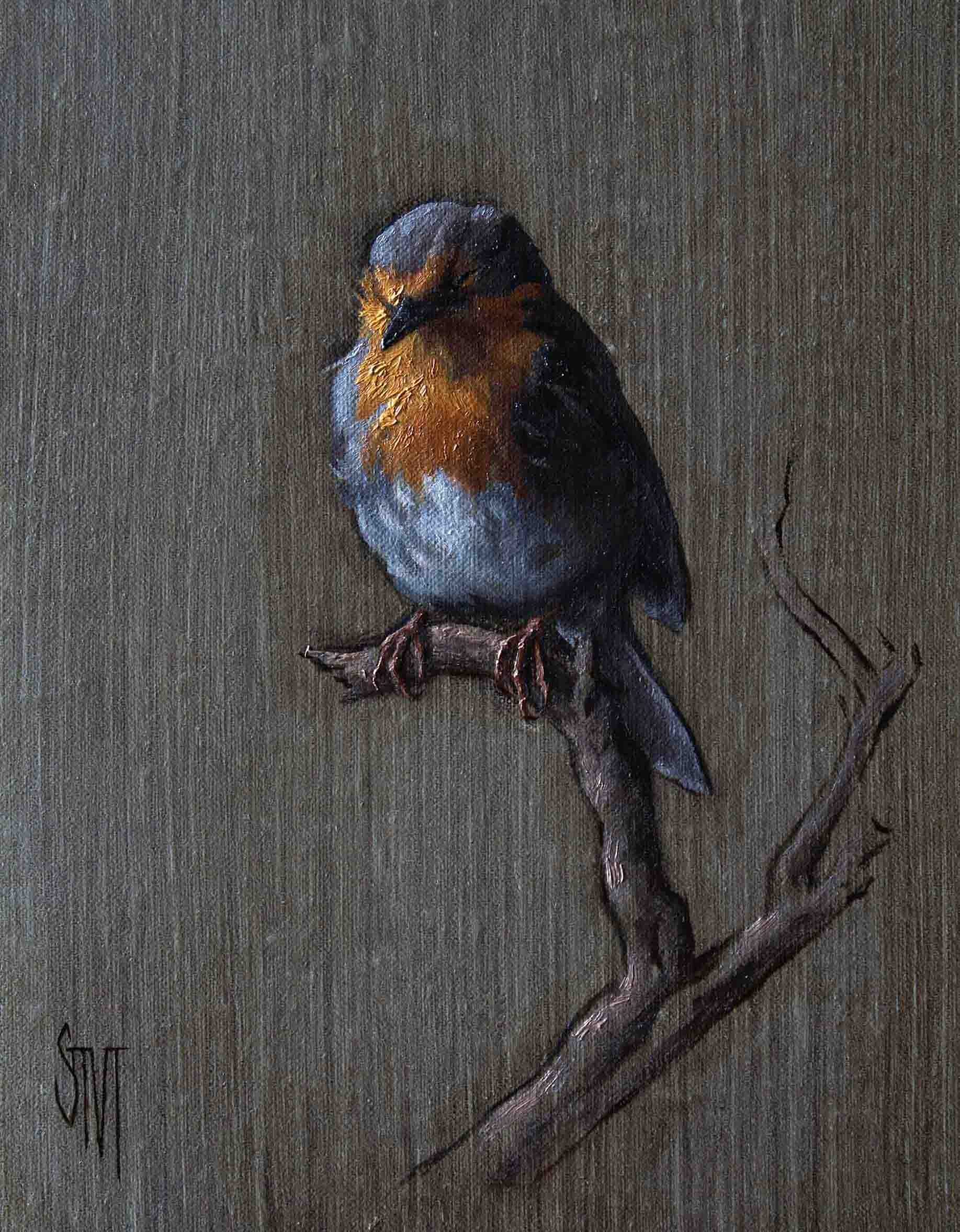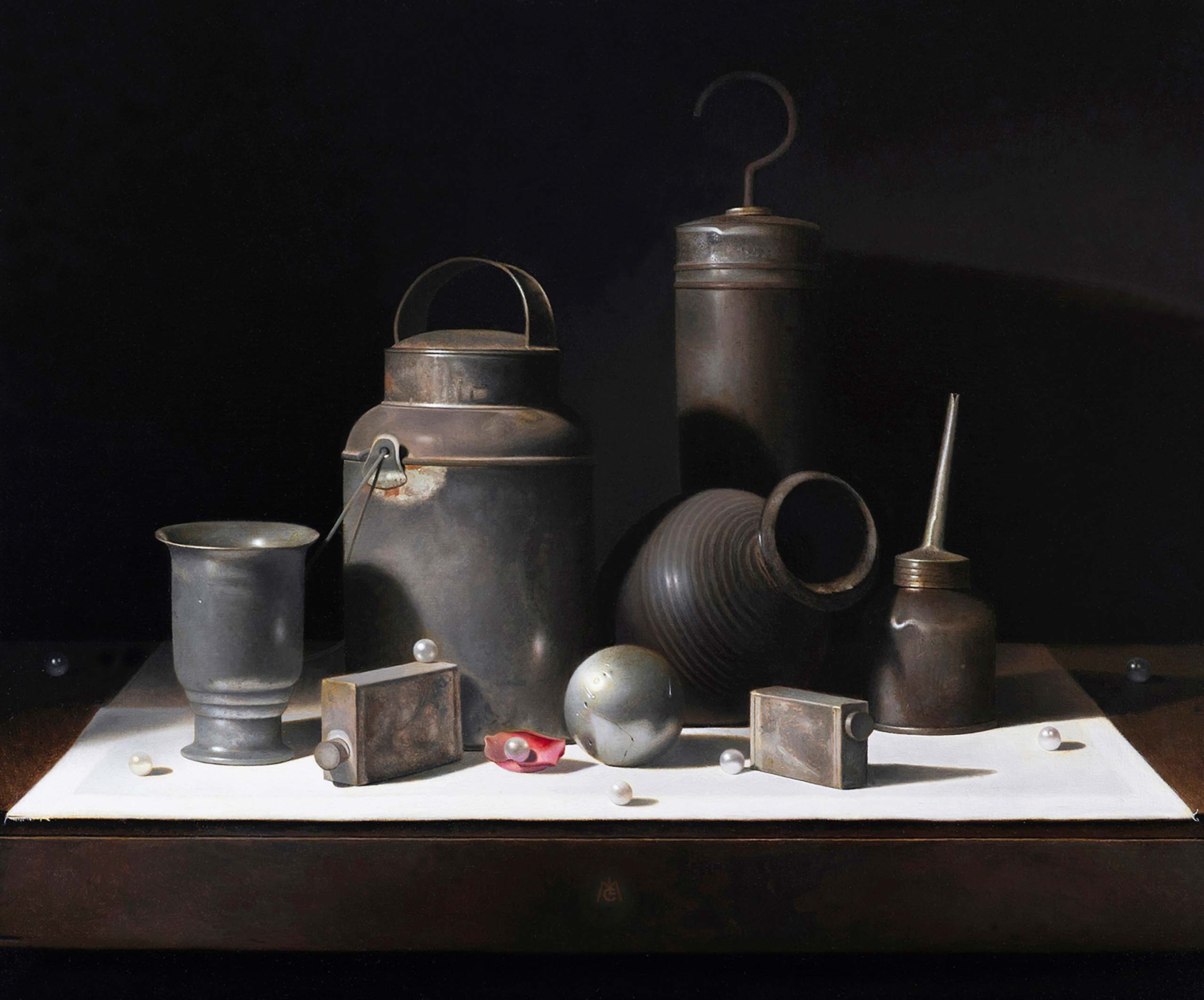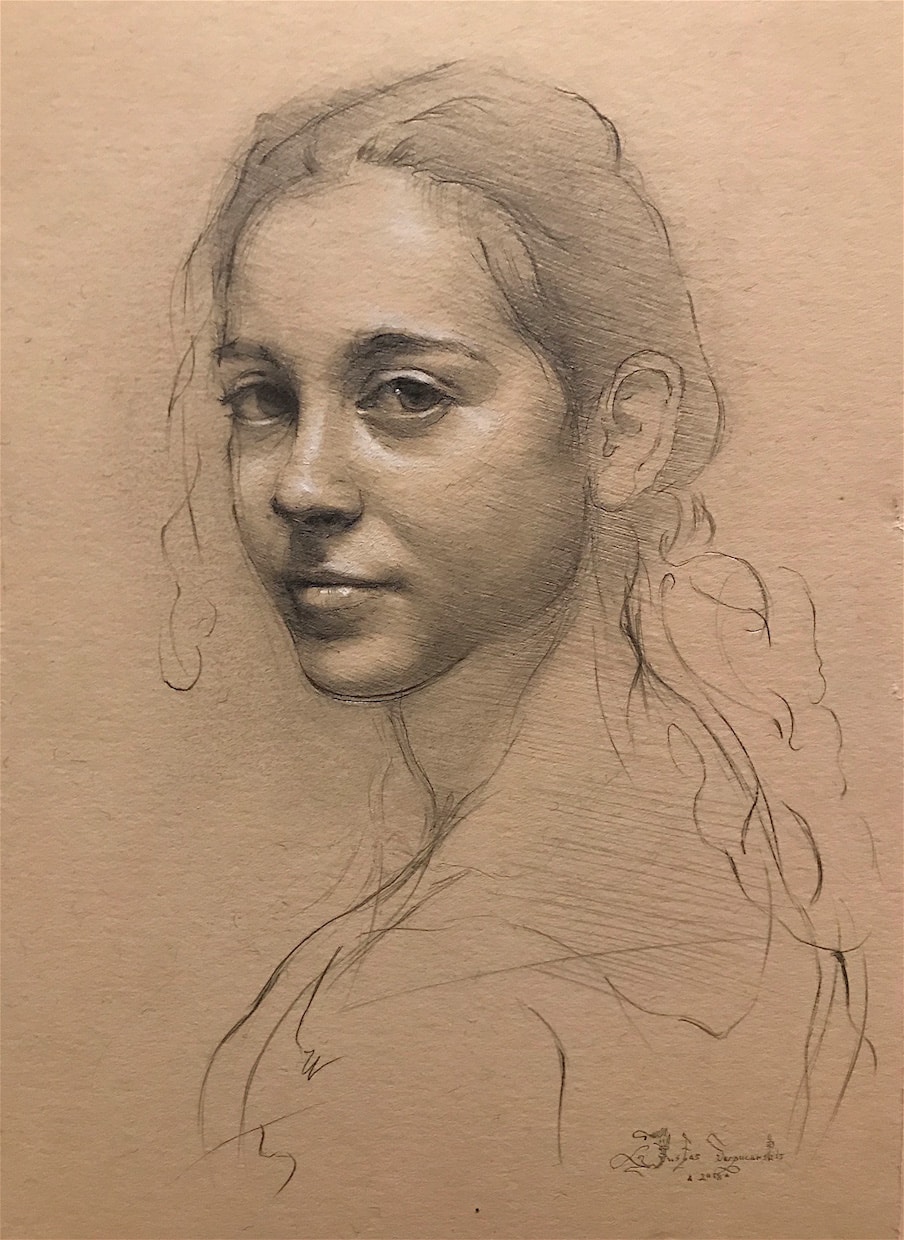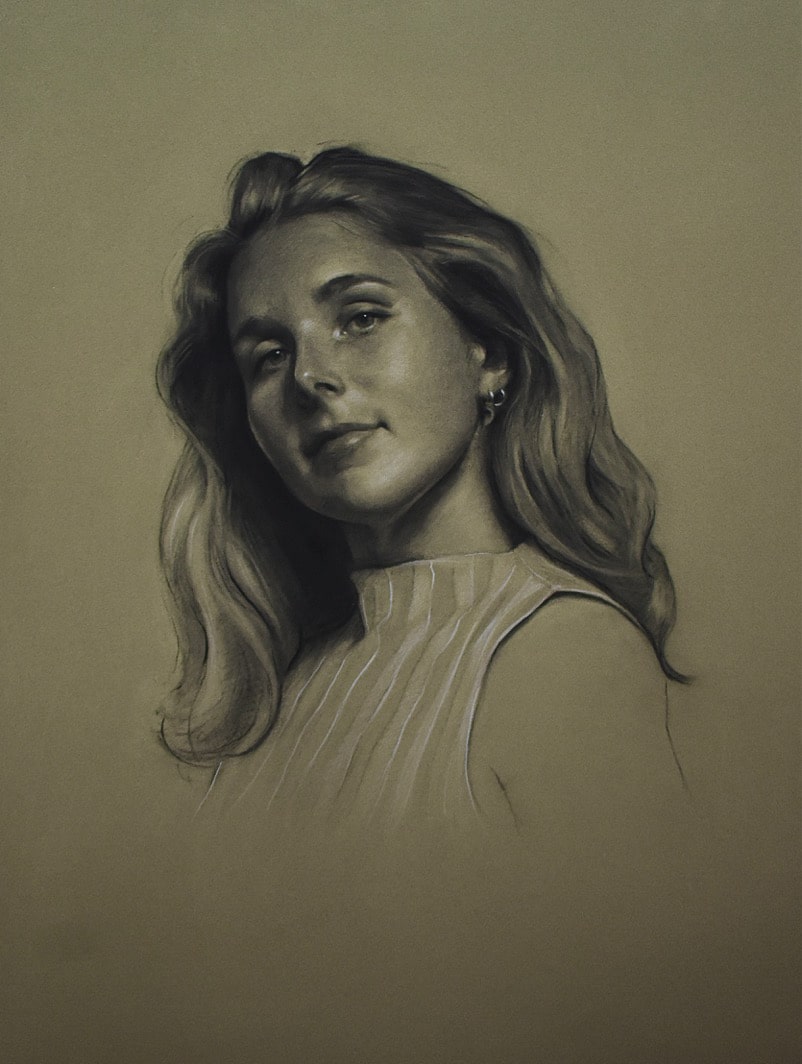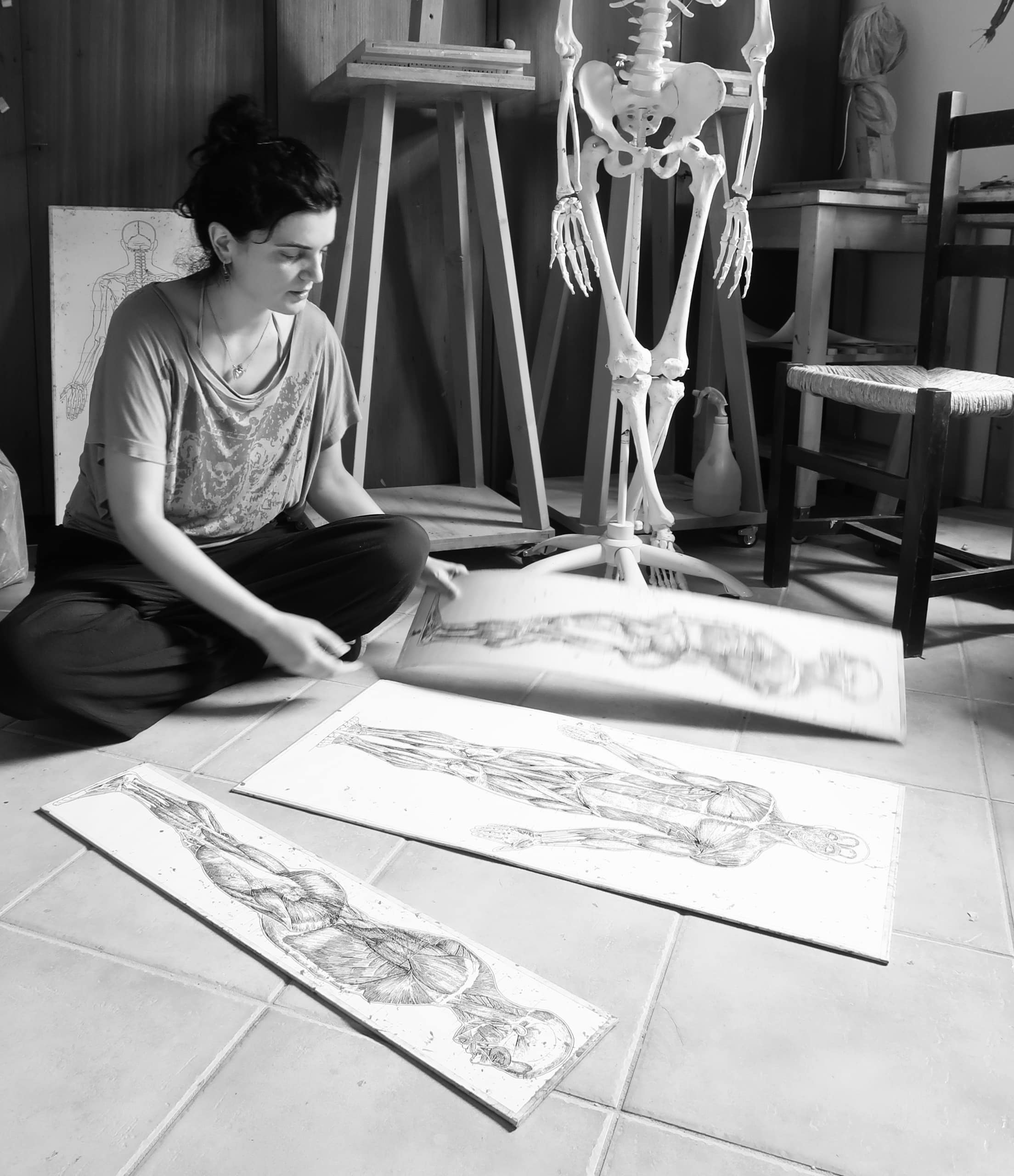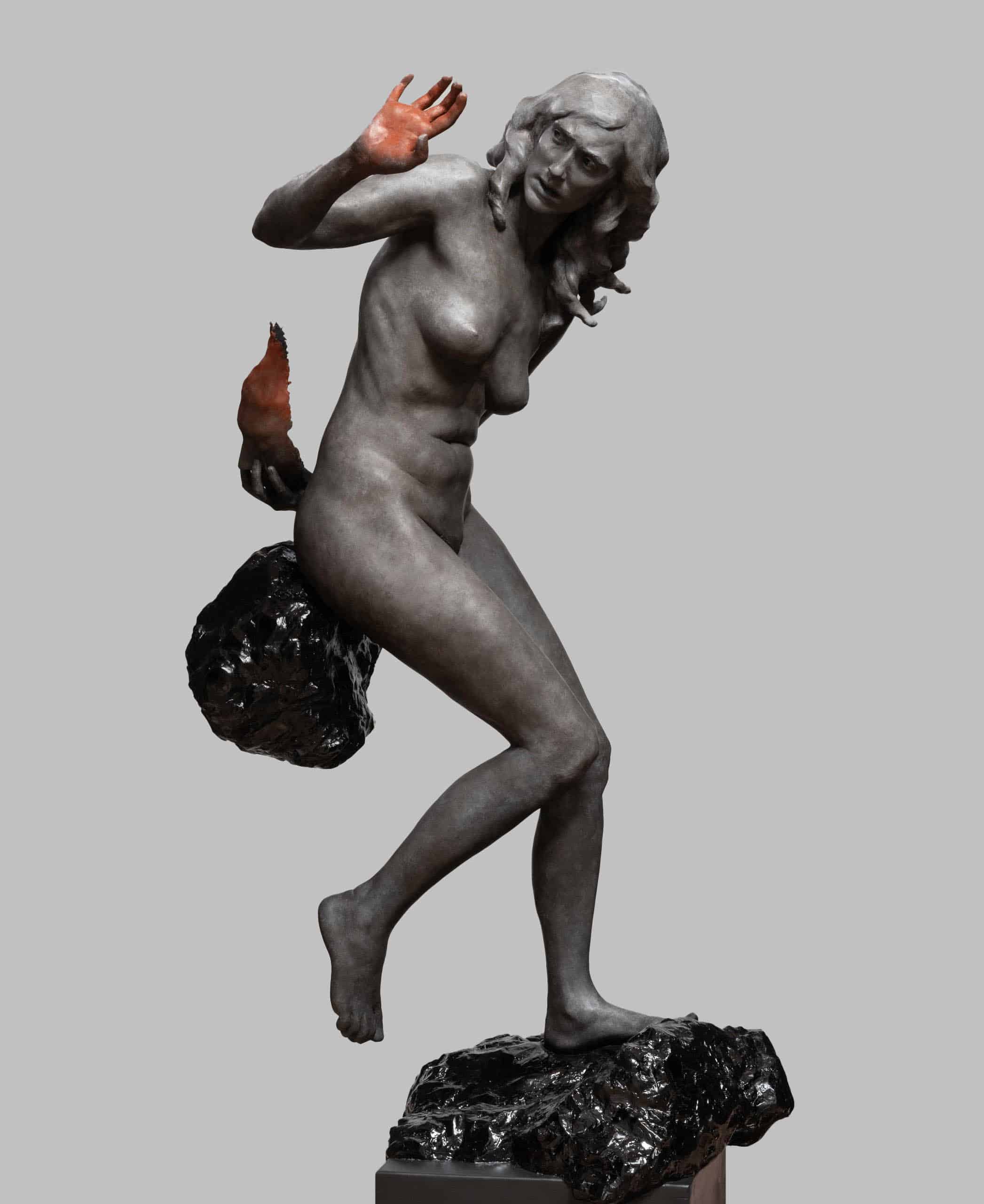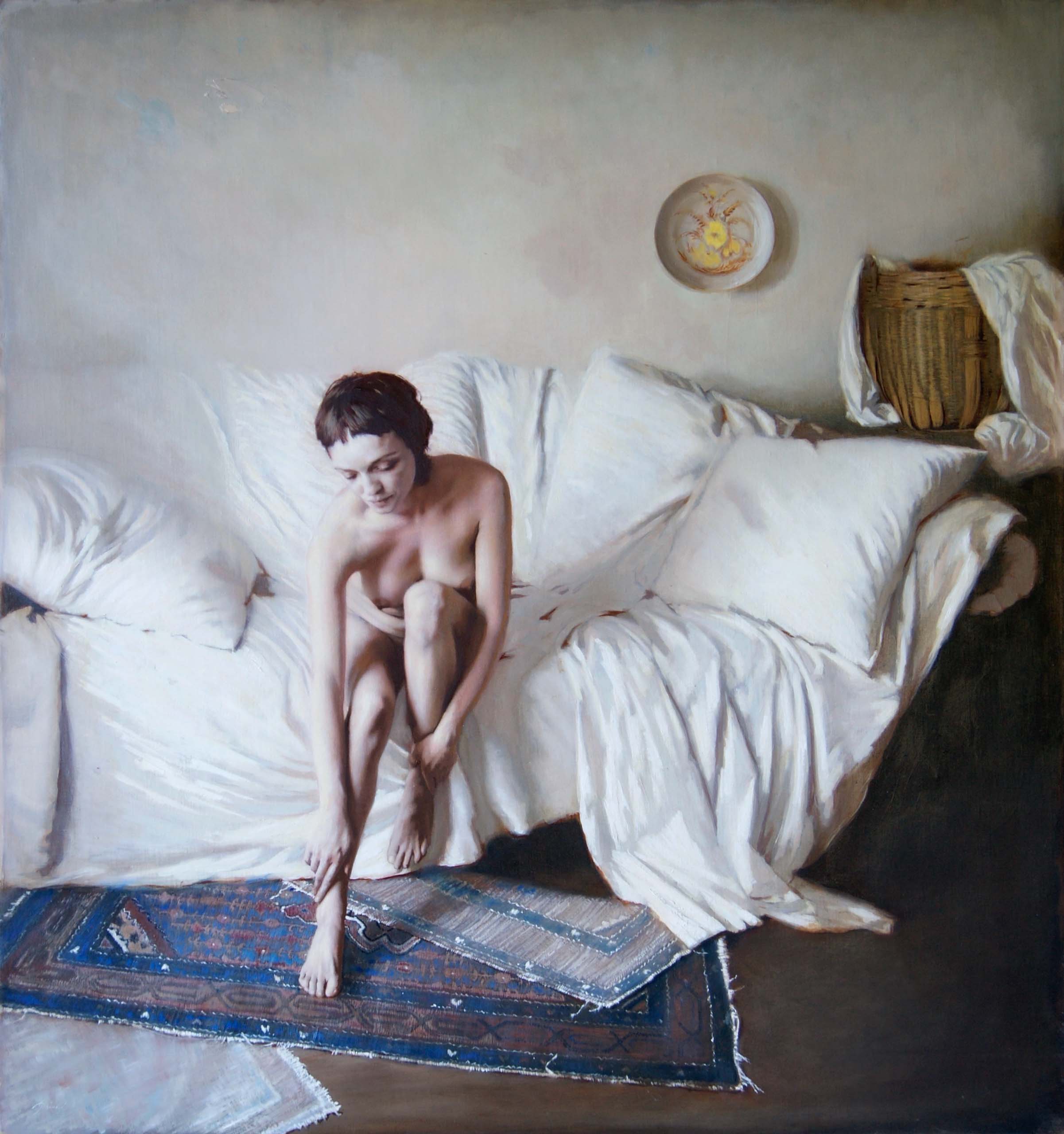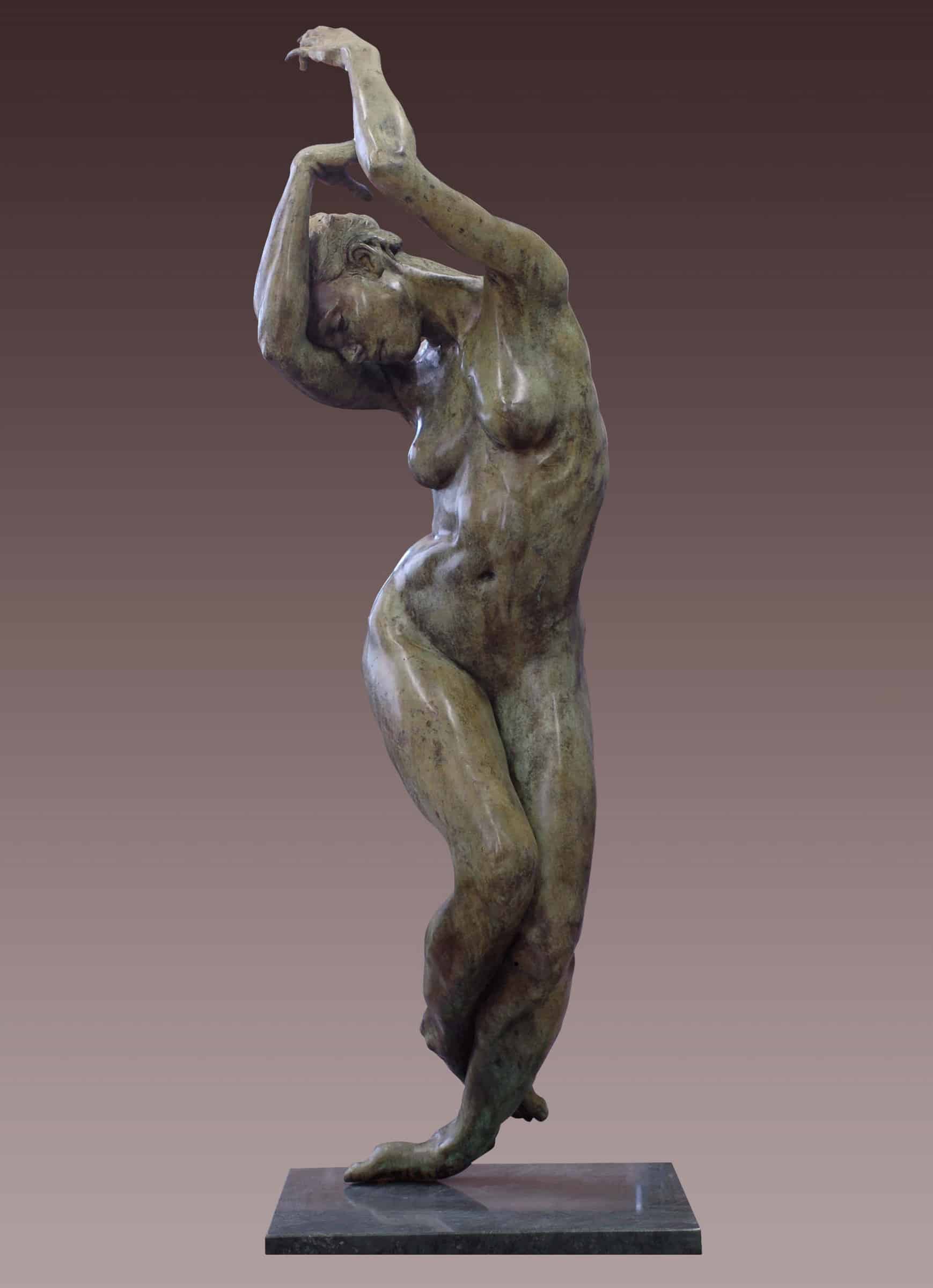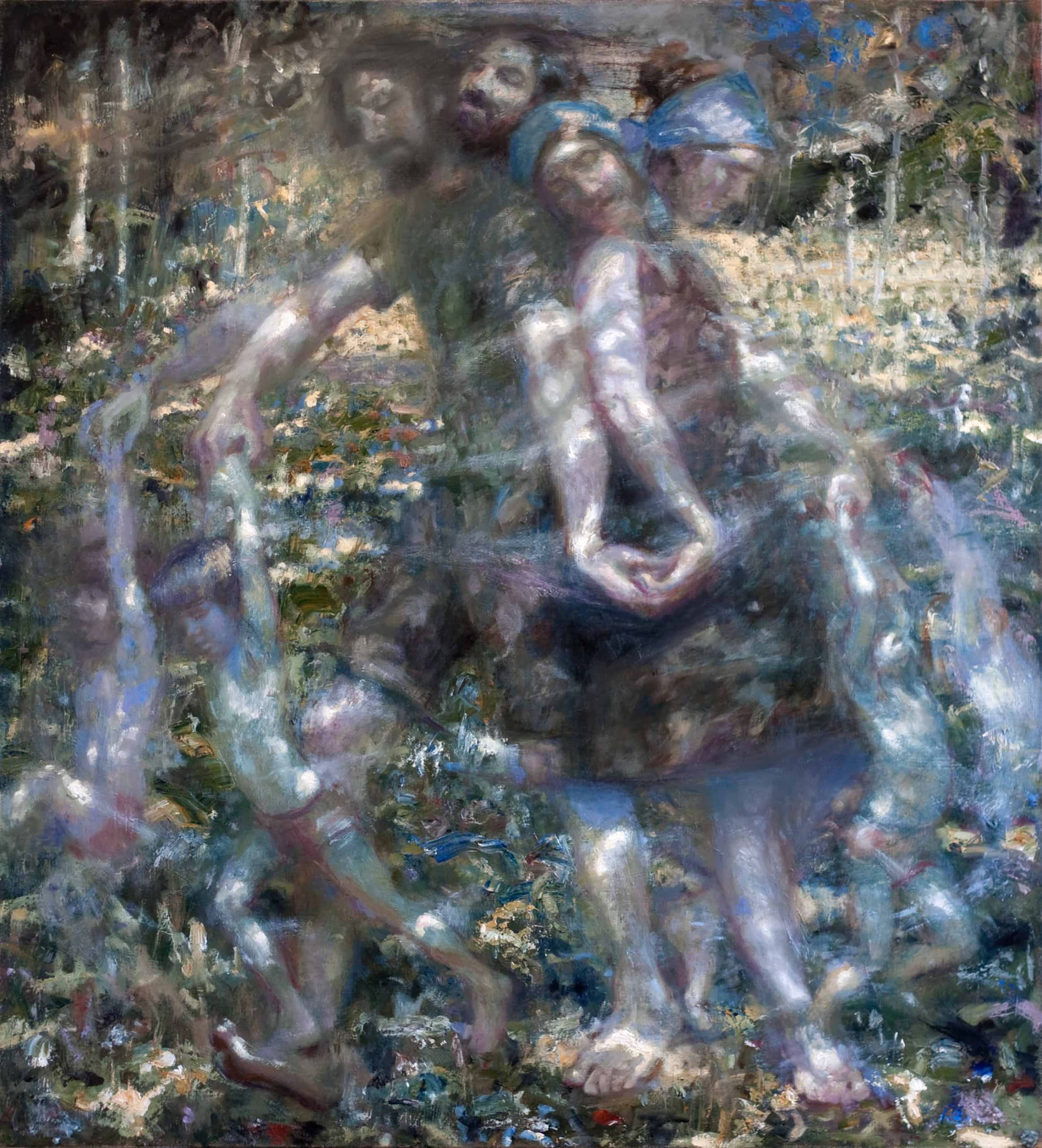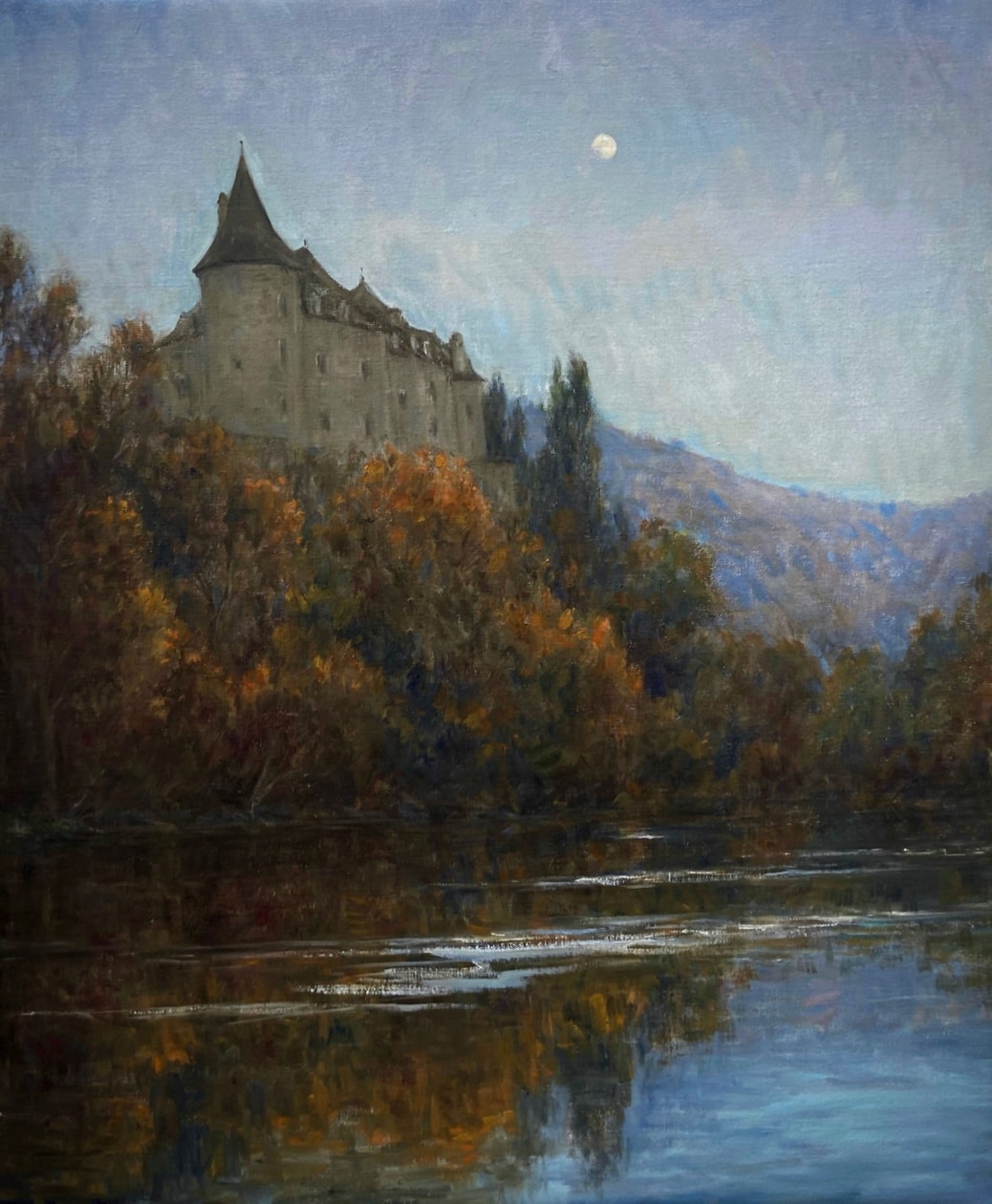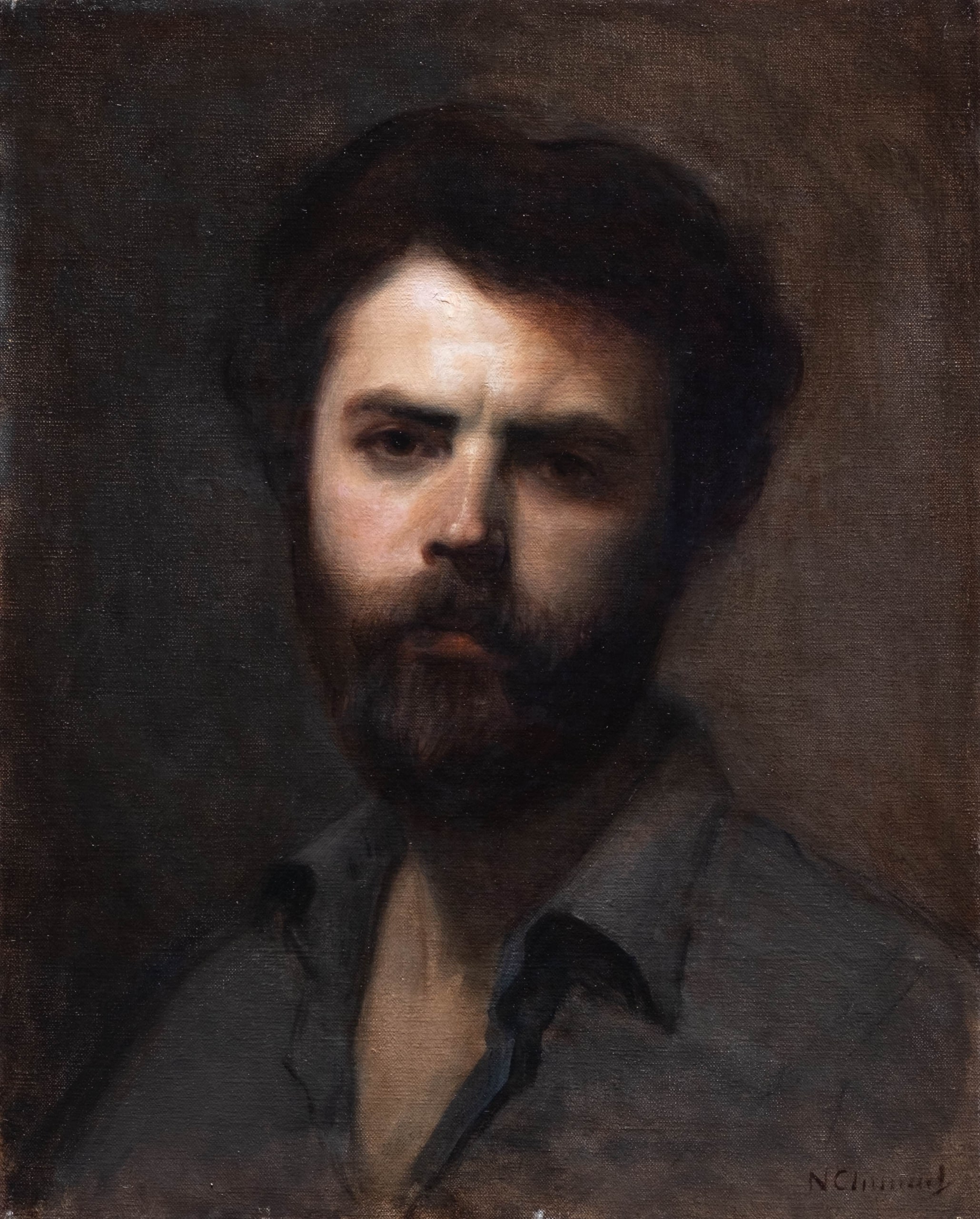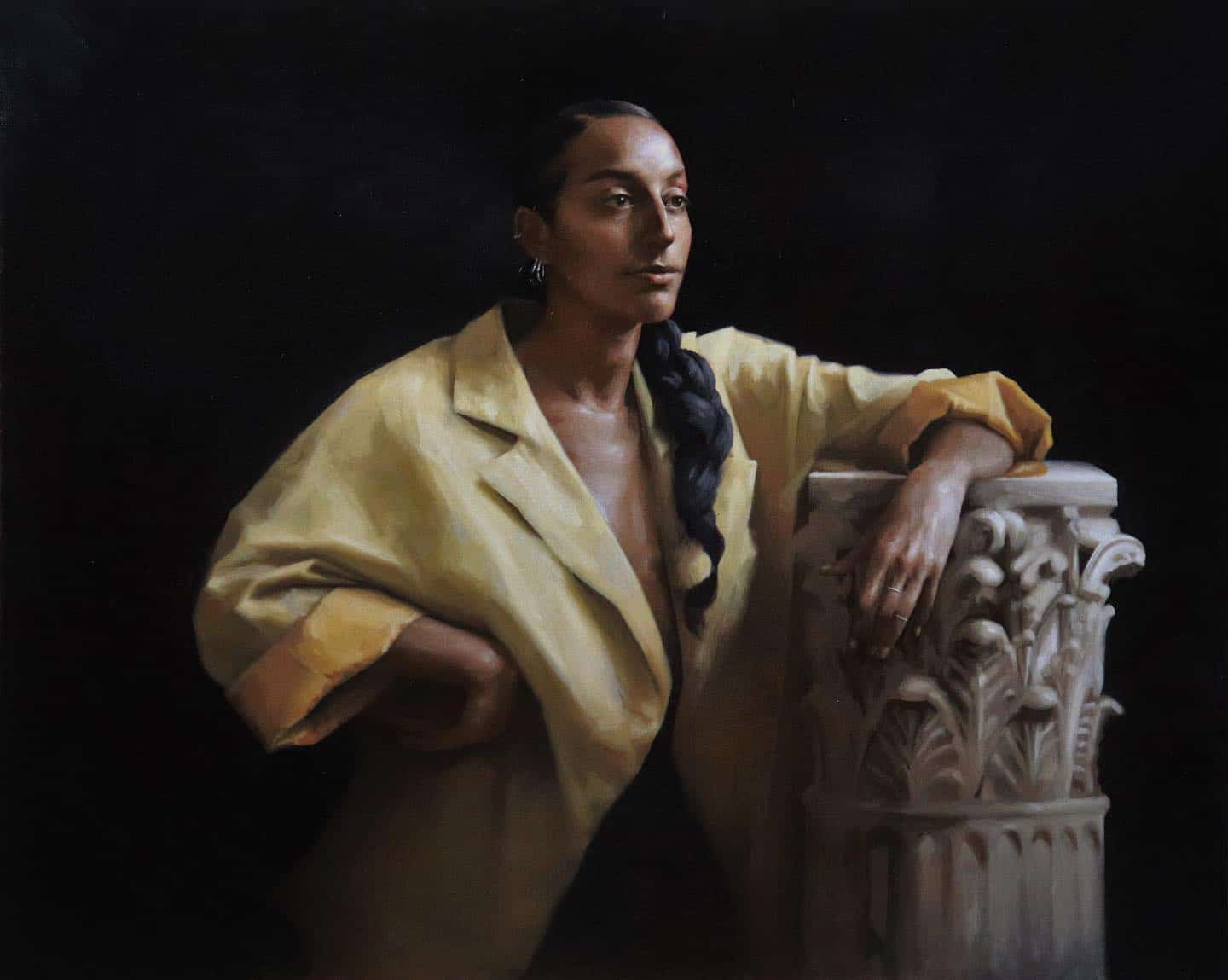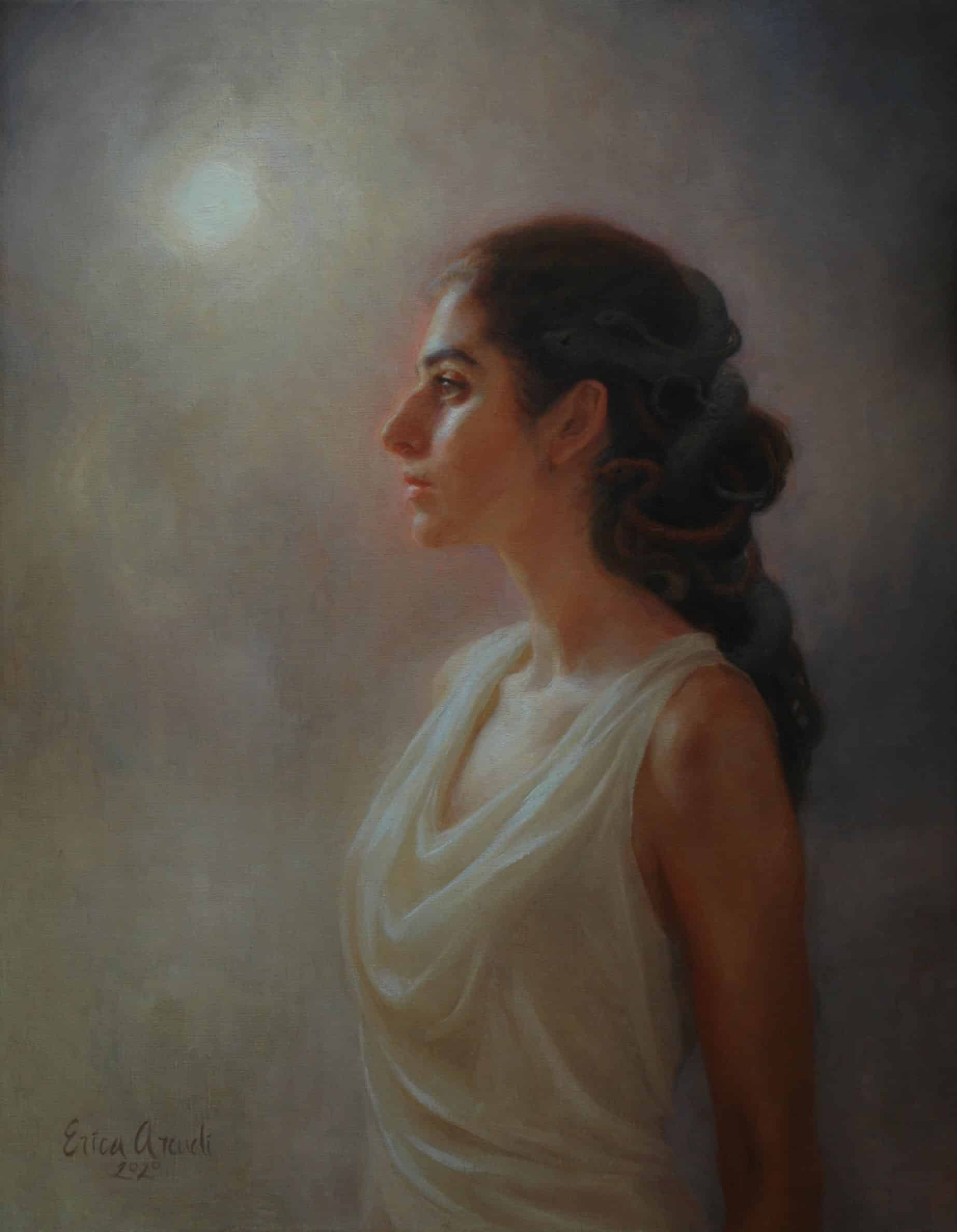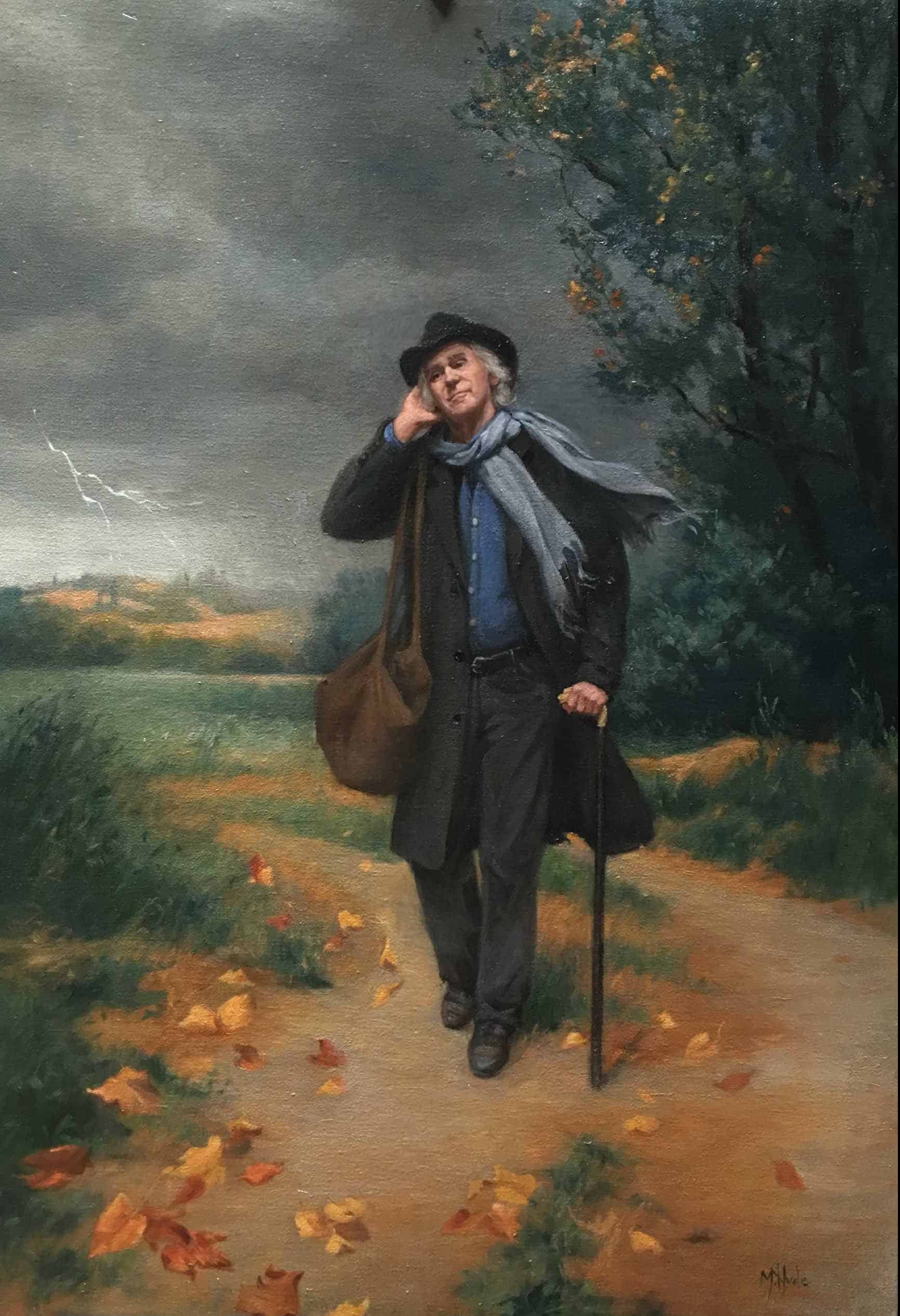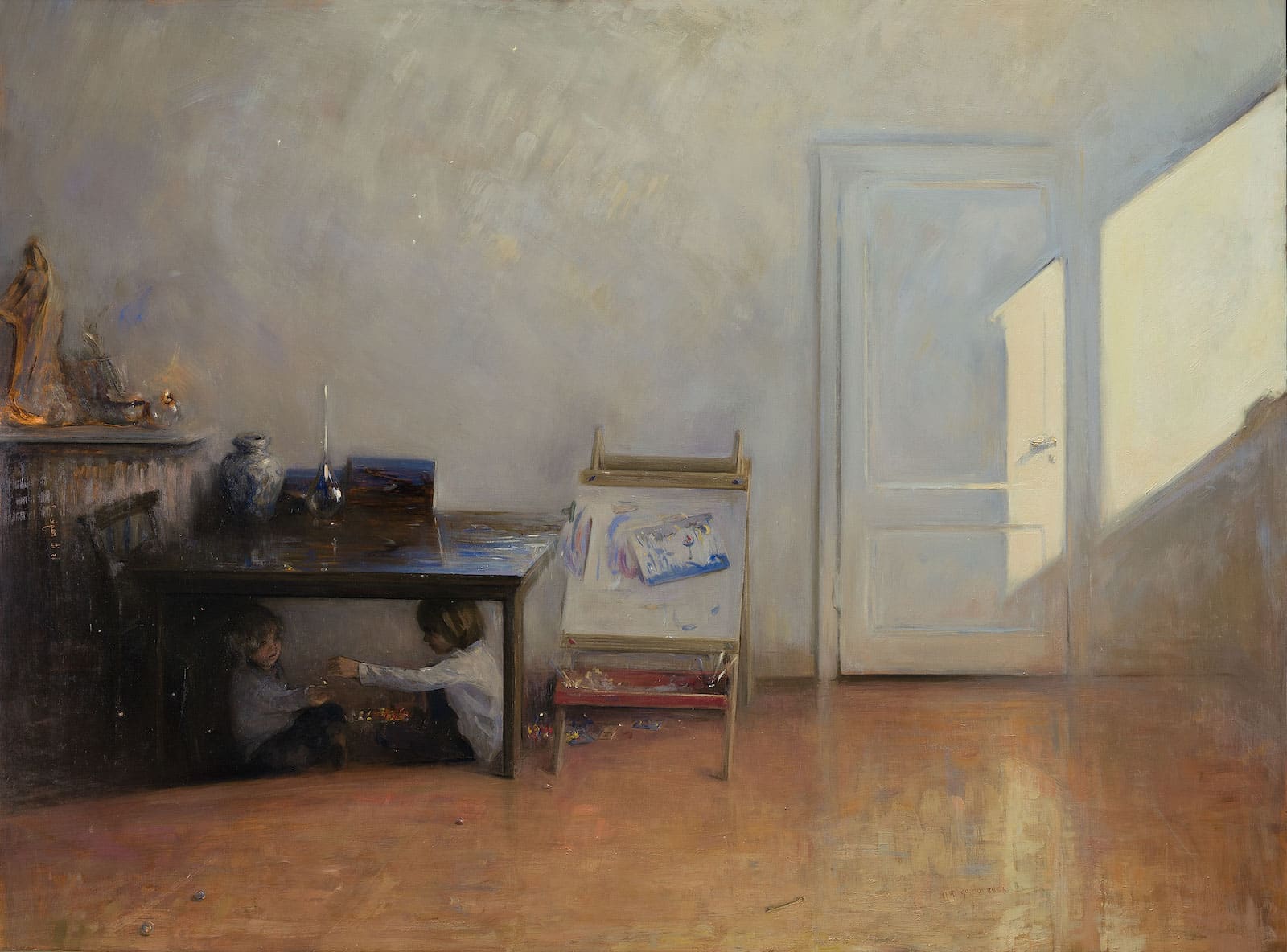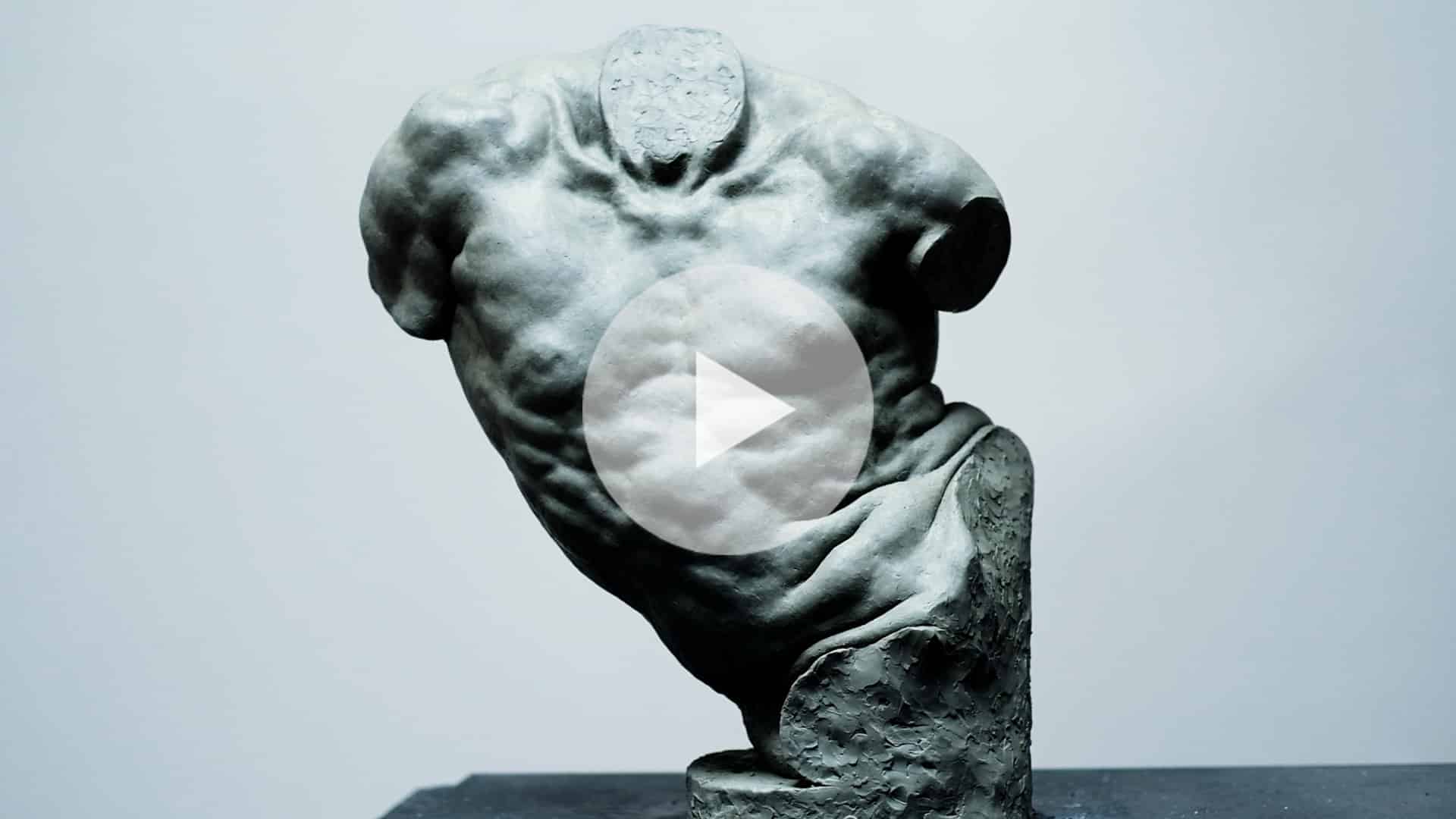March 11, 2022 / Spotlight on Art
Puzzle by
Eric J. Drummond
My hopes with this piece was to convey an awareness to autism, by expressing a deeper mental atmosphere using my brother Daniel’s wonderful portrait, and his incredibly articulate hands. An essential puzzle piece to my life. He is, without a doubt, my wellspring of inspiration.
Eric J. Drummond, "Puzzle", Charcoal, graphite and white chalk on hand toned paper, 2019

“Puzzle is the first project I took on after my studies in Italy. I returned back to Canada to search for identity and a bit of freedom in my work. I had always wanted to depict my brother, but I didn’t want to make more of the same. After three years, it was tempting to stay within a comfort zone, and I had always wanted to make work more personal to me. I looked to depict the most genuine person in my life, to start with a subject close to me.
This is a portrait of my older brother Daniel. At the age of 2, Daniel was diagnosed with Autism. Because of this, his ability to express him self through language can be quite difficult. But like anyone else, it leaves his hands to be a huge indicator to how he feels and how he communicates with others.
I find the most beautiful thing about my brother is he lives without any preconceived notions about what is the “social norm.” Every second of his life, every reaction, every feeling, is totally authentic and genuine. My hopes with this piece was to convey an awareness to autism, by expressing a deeper mental atmosphere using his wonderful portrait, and his incredibly articulate hands. An essential puzzle piece to my life. He is, without a doubt, my wellspring of inspiration.

Puzzle preparatory sketches
In the beginning I began organizing just the position of his head and the light source. The idea originally was for his portrait and hand gestures to be separate drawings. As I sketched the idea out, I felt that it wasn’t enough to communicate who Daniel is and my relationship to him. His hands are a big part of the way he expresses himself.
Puzzle sketch

Puzzle sketch
As a child I remember the old depictions of cherubs and seraphim having quite an impression on me. These floating portraits carrying and almost architecturally framing these faces. Specifically, Giotto’s painting of St Francis’ vision of a Seraph and the earlier depictions of them in Byzantine art inspired this idea of Daniel’s hands being this framework for his portrait. This idea of his hands being like the many wings of these order of angels created a composition that I could work his hand gestures into. This, and reading about tondo paintings from the Italian Renaissance ultimately provided me with elements that felt could represent more of who Daniel is while simultaneously giving me a great break from student work.

Details of Puzzle


Details of Puzzle
I even went about drawing the work sectionally. I elected to design and finish the head first (much to the approval of my brother) while rendering the hands after. While in this design phase, I wanted to make sure the piece had a psychological weight to it. It’s a portrait of an Autistic man, so I positioned Daniel’s head slightly downward, so we see his cranium more predominantly.
The hands were fun because I’ve known those hand gestures since I was a child. And I had to keep in mind that these were Daniel’s hands, not just anyone else’s. Each one is a different emotion varying from curiosity, happiness, to focus and anger. And to keep a sense of focus I kept the hands slightly looser in finish compared to that of the main focus – the portrait.
I layered the material as well, treating each day with the drawing like another pass of paint on a painting. Layering white chalk in the lights and even scraping some in on the high points to create textures. I remember being told not to use white chalk so much, but I have the freedom to express the medium in whichever way I want. I wanted the material to physically become the form, and exploit it to its complete ends…and if it achieves the desired translation, then it works.
In these years after graduating, and the world changing so much, I’ve decided to spend time simply on the craft and also myself. The expression and handling of your work should always be paramount, so I’ve turned my attention to these things. Also, I’ve really been trying to search for emotional connections to what I make. I think a lot of the artists I really admire from the past were constantly searching for these things through their work too, along with technical practice.”
– Eric J . Drummond
More about Eric J. Drummond
Eric J. Drummond began drawing at a very early age. Born to parents from Madeira, Portugal and Le Marche, Italy; he was constantly inspired by western art specifically from the Italian Renaissance. Some of the artists most influential to Eric over the years include: Michelangelo, Leonardo Da Vinci, Pontormo, Cellini, Bernini, Rembrandt, Ribera, Ramon Casas, Velazquez, Carpeaux, Repin, Solomon J Solomon, John Singer Sargent, Bonnat and Bouguereau. After studying Art History at the University of Guelph, he was accepted and enrolled at The Florence Academy of Art in 2016. There he was taught to draw and paint the figure from life and compose portraits and still life’s, using the traditional methods and practices developed by the old masters from which he was so inspired by as a child.
Eric works only from life. This allows him honest and true artistic translation. Staying true to the sight size method developed by the Academie des Beaux-Arts in Paris, France in the 1800s, he largely crafts his own materials, and hand preps his own canvases to ensure quality in each work. Working from life allows Eric total creative control and interpretation of his subjects.
And this creative control, by working from life is about translation. Artists are not printers, they are not copyists. This philosophy of interpreting nature has been canon to art since before the Greeks. Each image is Eric’s view of the specificity of what he see’s while also balanced with his allowance to experience of what he see’s. People, portraits, and figures done in oils under the academic principles are his focus, using the medium of paint or charcoal as a sensory experience to be seen as well. Using thickness and thinness of paint to translate form, compression of values to express light, and the experience of interacting with his subjects in person to express moments between human beings. The goal is to use methods developed by the old masters and bridge a new horizon in Canada for painting and draftsmanship.
Eric’s work has been awarded and featured by The Art Renewal Center, The MEAM Museum of Barcelona, and The Florence Academy of Art. He is an alumni of and has worked as a principle instructor of drawing at The Florence Academy of Art, and has exhibited internationally in Italy, Spain, The United States and Canada.



